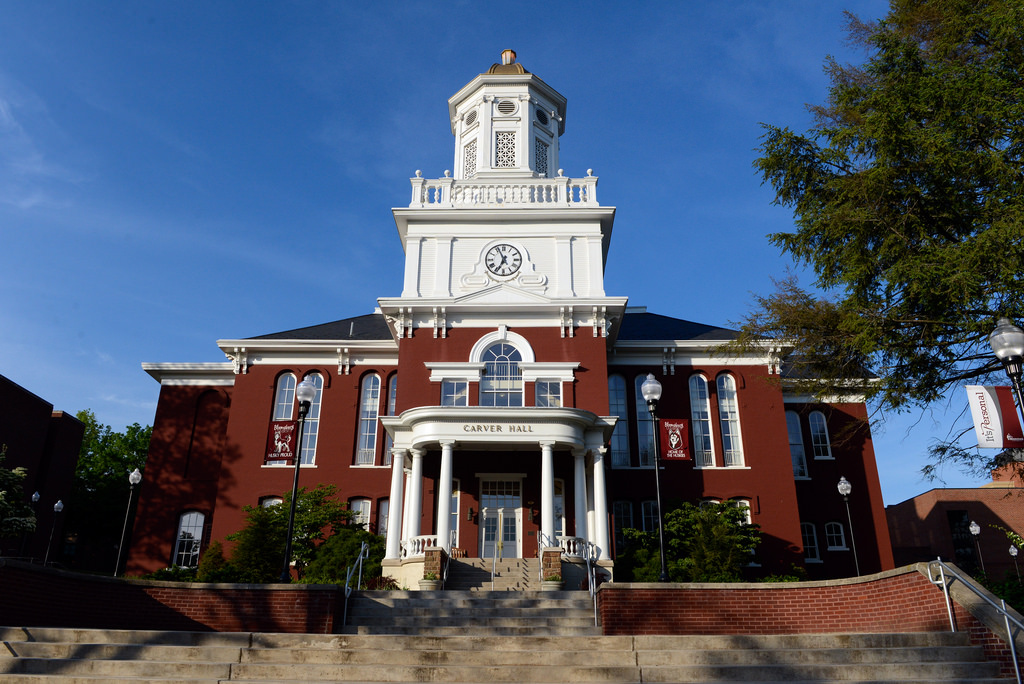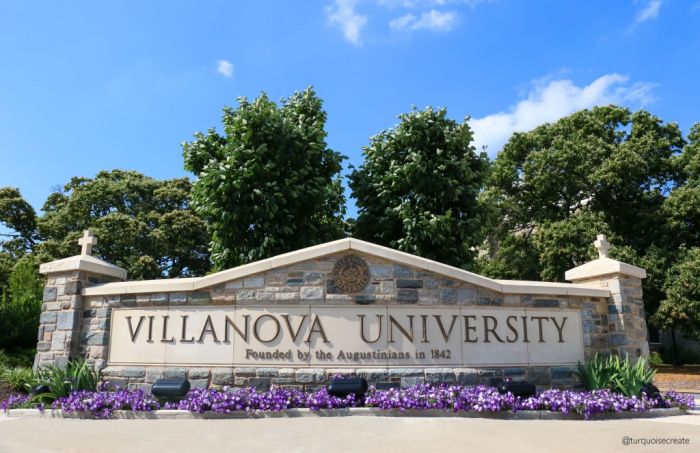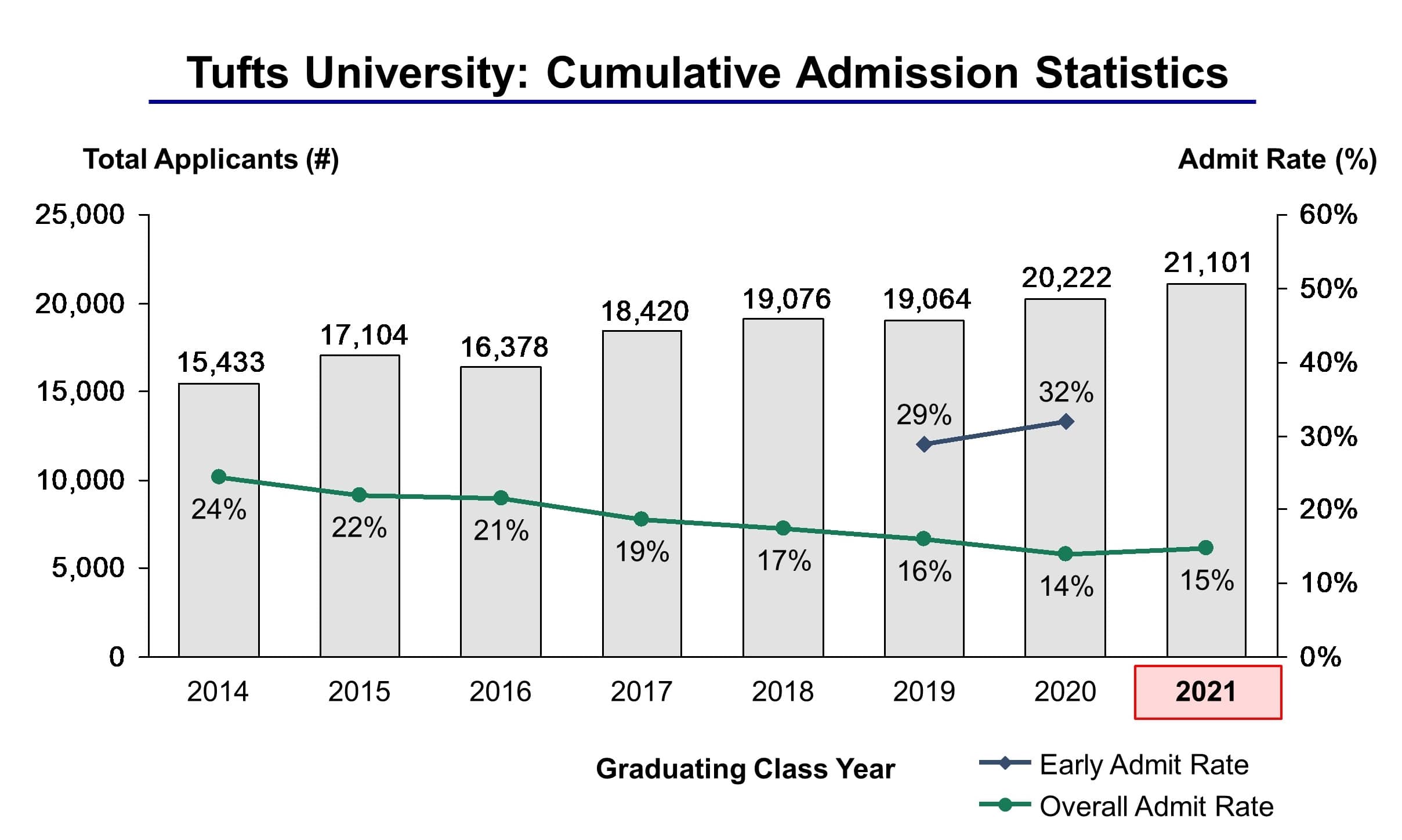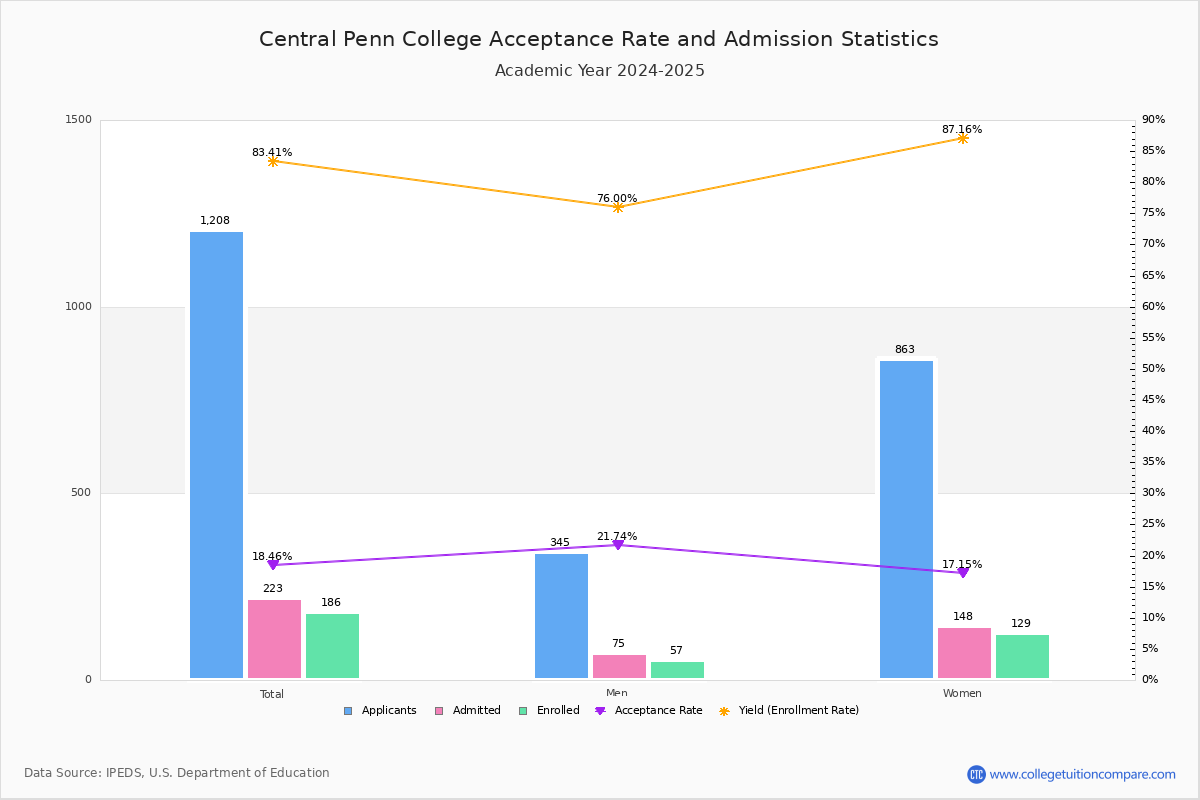Admission StandardsEliteApplicant CompetitionExtremeHow hard is it to get into Penn and can I get accepted? The school has a 8% acceptance rate ranking it #1 in Pennsylvania for lowest rate of acceptance. Last year, 3,740 out of 44,491 applicants were admitted making Penn an extremely competitive school to get into with a very low chance of acceptance – even for applicants with the highest scores and grades. Academically, it has exceptionally high requirements for admission test scores, generally admitting students who score in the top 4 percent.
University of Pennsylvania typically accepts and attracts "A-" average high school students. With over half of admitted students enrolling, acceptance by University of Pennsylvania is a prized outcome for many students. Most incoming freshmen graduated in the top ten percent of their high school class. The Wharton School of the University of Pennsylvania requires applicants to submit either a GMAT or GRE score to be considered for admission to its full-time MBA program. With a 27% acceptance rate last year, the average student had a 722 GMAT and 3.58 undergraduate GPA.
Two letters of recommendation must be submitted with an application. International students are not required to submit TOEFL scores. The deadline to apply for its upcoming class is March 30, 2022. With Yale opening two new residential colleges in the fall of 2017, the university had announced prior to the admissions cycle that they'd be expanding the size of their incoming class. More students were admitted in the Early Action round for the Class of 2021 at Yale than in any recent year — though not in Yale's history — with 871 students earning slots.
These 871 students came from an applicant pool of 5,086 Single Choice Early Action applicants, which was 9% larger than last year's EA pool. As for the rest of the Early Action pool, 53% of applicants were deferred admission to the Regular Decision cycle, while 28% were denied. Hey, we've got to offer some color commentary…Ivy League admissions statistics would otherwise be a bit dry.
This is a notable disparity, one we've pointed out before for previous incoming classes of Brown University. Highly selective colleges — with the obvious exception of, say, all women's colleges — tend to want to admit men and women in equal numbers. So while Brown University's admissions office would never suggest that it helps to be male when applying, logic tells you that it sure does. They still need to be extremely impressive candidates of course…since, after all, Brown is one of America's most selective colleges. The University of Pennsylvania, which ranks among the20 most selective universities in the country, has a highly competitive admissions pool with a low acceptance rate and high average SAT/ACT scores. However, Penn has a holistic admissions process involving other factors beyond your grades and test scores.
A strong application essay, supplemental essay, and glowing letters of recommendation can strengthen your application, as can participation in meaningful extracurricular activities and a rigorous course schedule. Students with particularly compelling stories or achievements can still receive serious consideration even if their test scores are outside of Penn's average range. Harvard's Early Action applications for its Class of 2021 were up 5% over last year.
In all, 6,473 students applied Early Action to the university — as compared to 6,167 for the Class of 2020. This year, 938 of these young people earned admission, marking an admit rate of 14.5% (or 0.3% lower than last year's EA admit rate of 14.8%). As Harvard's longtime Dean of Admissions and Financial Aid William Fitzsimmons dubs the annually rising Early pool, it's "the new normal." In the Regular Decision round, 1,118 students were also offered admission. So if you combine the Early Action admits with the Regular Decision admits, you have a Harvard Class of 2021 that is comprised of 2,056 students. Overall, of the nearly 40,000 (wow!) applicants, Harvard College offered admission to 2,056 students. This marked an admit rate of 5.2%, the lowest admission rate among the eight Ivy League schools for the Class of 2021.
It also happened to be the admit rate for last year's Harvard class — so things stayed steady. Brown University leads off our Class of 2021 Ivy League admissions statistics. In the Early Decision round, 695 students were offered admission to the university. So there were a whole lot of historical admissions benchmarks set by Brown for the Class of 2021. And of the students who weren't admitted in the Early Decision round, 60% were deferred to the Regular Decision pool, while 18% were denied outright. And if you're wondering about the admit rate for Brown's PLME program for the Early Decision pool of the Class of 2021, the figure stood at 6.7%.
Overall, 32,900 students applied for admission to Yale to be members of the Class of 2021, with a mere 6.9% of students being offered admission — a statistic that includes both the Early Action and Regular Decision pools. But the overall admit rate wasn't as strong as last year's admit rate for Yale, which stood at 6.27%. So when you hear that admit rates go down each and every admissions cycle, that's generally true but it's not always the case.
It wasn't the case for Yale for the Class of 2021 — though the school did have to fill a larger class because of the opening of those two new residential colleges. And as for the number of students who were placed on the waitlist after Regular Decision at Yale, that figure stood at 1,181. University of Pennsylvania UG acceptance rate for 2019 was 7.7 percent, i.e., about 3,446 applicants received admission out of 44,961 applicants.
The number itself depicts the difficulty level of getting into UPenn. However, one must remember that the university looks for students whose goals align with the university and its founding father, Benjamin Franklin. Both undergraduate and graduate applicants should be inspired to be of service to the UPenn community and society.
Apart from an exceptional academic record and competitive scores in the standardized tests, UPenn looks at a student's complete profile. The interview process is an excellent opportunity for applicants to let the university know more about themselves. For interview tips and guidelines, check the university website.
At California University of Pennsylvania, having a high GPA is considered a mandatory requirement for admission to its programs. It is generally believed that a good GPA can improve a candidate's chances to secure admission into any college of their choice. So, candidates aspiring to get into the university must have above-average high school grades with a minimum GPA score of 2.50. Interestingly, the average high school GPA of the students at CUP is 3.20. The candidates are also required to submit a number of important documents to the university along with their application.
University Of Pennsylvania Acceptance Rate They include the Secondary school GPA, Secondary school record, and Admission test scores (SAT/ACT). Of the 56,333 students who applied to Penn's Class of 2025 in the early and regular rounds, 3,202 were admitted, leading to an overall acceptance rate of 5.68 percent. The 3,202 admitted students to the Class of 2025 included 1,194 students who were admitted through the early decision round. The admission rate for the ED round was 15 percent out of 7,962 applicants. Last year, 42,205 students applied to Penn's Class of 2024 in the early and regular rounds and 3,404 were admitted, leading to an overall acceptance rate of 8.07 percent. Out of the total 3,404 admitted to the Class of 2024, 1,269 students were admitted through the early decision round.
The admission rate for the ED round was 19.67 percent out of 6,453 applicants. For the Class of 2023, 44,960 students applied to in the early and regular rounds and 3,345 were admitted, leading to an overall acceptance rate of 7.44 percent. Record-low admittance rates pervade this year's regular decision applicants at other Ivy League schools, as well.
At Brown University, the college admitted just 6.6 percent of applicants overall, and only 4.8 percent among regular-decision applicants. A reported 38,674 students applied; like Penn, this was the school's largest applicant pool ever. Stanford states that a student's academic record is the most important factor in determining admission, but it also looks at components beyond numerical data. Through a holistic admissions process, the university gives weight to extracurricular activities and personal essays, both of which allow students to illustrate their individual backgrounds and experiences.
Penn's four undergraduate schools include a college of arts and sciences, a business school, an engineering school, and a school of nursing. No matter which school or major students are enrolled in, Penn emphasizes that all undergraduate students receive a thorough foundation in the liberal arts. Many students take courses across all four undergraduate schools and choose from countless interdisciplinary minors and dual degrees. Each year the University of Pennsylvania receives approximately 23,000 undergraduate applications and admits about 4,000 students. Its 18% acceptance rate that makes it one of the most selective universities in the country.
The Early Decision option is available for students who make UPenn their first choice and agree to matriculate, if accepted. There is a slightly higher acceptance rate for students who use this option. The University of Pennsylvania offered admission to a record-low percentage of applicants for its class of 2023. The college also received a record number of applications from prospective students.
The downward trend for admissions at Penn is in line with rates at other Ivy League schools. The University of Pennsylvania offers need-based financial aid like other Ivy League universities. Whether a student qualifies for this financial aid is decided by the Student Financial Services. The university commits over USD 10 million each year to fund financial aid for international students. Thus, students who wish to be considered for this aid need to apply for it during the admission process only. Students who do not receive or apply for financial assistance in their first year will not be eligible for this aid later during their academic journey.
If a student receives this financial aid, it will cover 100% of their demonstrated need with grant funds and work-study. Since international students are not eligible for federal funding, financial assistance is disbursed as university funding/grant/scholarship. Your child can apply to Penn via a binding early decision agreement by November 1st. They'll receive an answer of accepted, deferred to the regular decision pool, or denied by mid-December. Penn admits roughly half of their incoming class through early decision, but the UPenn early decision acceptance rate is still low, around 15 percent. A whopping 56,333 applications were received by Penn for the Class of 2025, the largest applicant pool to date; only 3,202 individuals were accepted.
Working out to 5.68% acceptance rate, this was the most selective year in the university's lengthy history. Applicants for the Classes of 2016 and 2017 saw admit rates in excess of 12%; the Class of 2018 is when the school's admit rate first dipped below 10%. The two years prior to the Class of 2025 cycle, 8.07% and 7.4% were accepted. Another factor specific to this year's admissions cycle that might have driven down the acceptance rate was the test-optional policy that numerous colleges, including Harvard, implemented due to the pandemic.
The policy lowered the barriers to applying and likely boosted application rates as a result, per educational consultant Whitney Laughlin. As of fall 2017, there were 21,599 students studying at Penn, split equally between undergraduate and graduate students. Penn has a strong focus on interdisciplinary learning and research, offering double degree programs, unique majors and academic flexibility. This means competition to study at Penn is fierce, particularly at undergraduate level. The admission rate for the class of 2021 was 9.3 percent, of which 46 percent were either black, Hispanic Asian, or Native American. Unusually for an Ivy League school, women comprise over half of all students enrolled.
In the scattergram, the blue and green represent accepted students. You can see that the great majority of admitted students had a self-reported GPA of 3.7 or higher, a combined SAT score (ERW+M) of over 1200, and an ACT composite of 24 or higher. Hidden beneath the blue and green in the upper right corner of the graph is a lot of red, so keep in mind that even students who seem to be on target for admission get rejected from Penn. For any school with a single digit acceptance rate, it is best to consider the institution a reach school, even if your scores are on target for admission.
This admissions data tells us that most of Penn's admitted students fall within the top 7% nationally on the SAT. For the evidence-based reading and writing section, 50% of students admitted to Penn scored between 700 and 760, while 25% scored below 700 and 25% scored above 760. On the math section, 50% of admitted students scored between 750 and 800, while 25% scored below 750 and 25% scored a perfect 800. Applicants with a composite SAT score of 1560 or higher will have particularly competitive chances at Penn.
The most competitive applicants have earned high grades and undertaken rigorous coursework. This weight toward academic achievement is made evident by Penn's fall 2020 incoming class statistics, in which 97% of admitted students were in the top 10% of their high school class. Down from its previous admission rate of 5.6% in 2020, Princeton is even more competitive to get into now with a 4.4% acceptance rate. The Ivy aims to identify students who will positively contribute and bring a unique perspective to its community. Rather than looking for a specific set of academic criteria, Princeton prefers applicants who have challenged themselves with rigorous honors and AP courses.
The most important piece of our review is your academic record, which represents your individual four years of academic development. We take a hard look at the many roles you serve as a student, sibling, athlete, son or daughter, volunteer, and/or employee. Assembling a class of students with diverse interests and experiences is a task that we take seriously. Many universities incentivize students in the US by helping them gain university credit by taking certain courses which are available for them in high school.
CLEP , Dual Enrollment , and AP Credit are the names of some of the famous courses that are programmed for the students in the US universities. Policy regarding these credits is, however, not the same in all the colleges as every university has its own policy. These courses help the students to get a higher GPA, increase their chances of completing a degree, and also help in the completion of a degree in a shorter time.
To avail these above-mentioned credits, students have to visit collegeboard.org and request to submit the scores to any university of their choice. University of Pennsylvania admissions are extremely selective with a low acceptance rate. Applicants even with above-average scores have very little chance of getting admitted. Essay and LOR should be emphasized while making the application as a good essay and strong recommendation can set you apart in this tough competition.
The admission decision are announced by Mid December for Early Decision applicants and by April 1 for Regular Decision applicants. The University of Pennsylvania has a track record of loving its Early Decision applicants. Last year, 55% of Penn's incoming class was comprised of Early Decision admits.
For the Class of 2021, 22% of Early Decision applicants to Ben Franklin's school earned admission — down slightly from last year when 23.2% of Penn ED applicants got in. In all, 6,147 students applied Early Decision to Penn for the Class of 2021, a new benchmark for the university. Early Decision applications were up this year to Penn — by a margin of 7% over last year (and 28% over the last four years — marking a steep spike!).


























